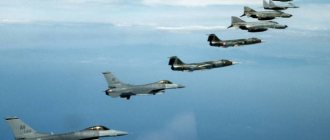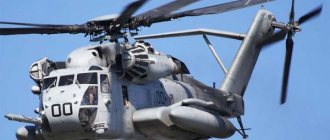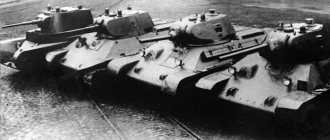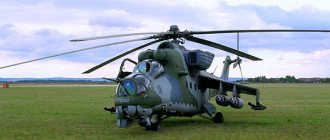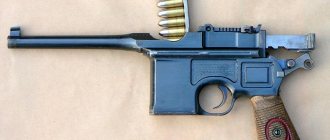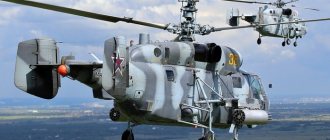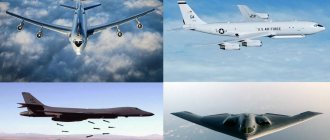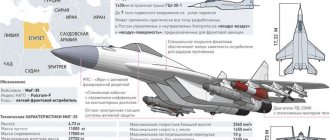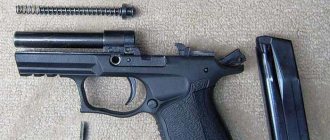Aircraft as a means of delivering weapons
Quite a long time ago, the concept of “ship – gun platform” appeared in the Navy. This by no means meant a flat-bottomed barge with a three-inch gun mounted on it, but implied an assessment of all the qualities of a combat vessel in terms of the use of weapons - a combination of speed and range, maneuverability and stability, controllability and seaworthiness with the ability and efficiency of firing. The question of how many and what kind of weapons a ship carries, how it is placed and how this affects its other characteristics is equally important for a combat aircraft, because this is also a ship, only an airborne one.
Full load of Mk.82 “cast iron” bombs on the MBD of a prototype F-15E attack prototype converted from a twin F-15B McDonnell Douglas F-15E Prototype. (converted F-15B, S/N 71-0291). Photo: https://www.flying-tigers.co.uk/2019/mcdonnell-douglas-f-15e-strike-eagle-corgi-arrivals-soon-zoukei-mura-new-kits-and-hobbymaster-update/
As we said, the F-15E and Su-34 multi-role combat aircraft were made on the basis of two-seat combat trainer fighters, and the main task of their designers was to give them the most powerful and varied weapons possible. Although the tasks of air defense of rear targets at their front lines, escort of bombers, electronic warfare, aerial reconnaissance and even gaining air superiority deep in enemy territory were also set, the main attention was paid to strike tasks - that is, the destruction of targets on the surface of the earth and water.
While expanding the arsenal of the aircraft, the designer needs to maintain its general and local (at the suspension points of special cargo) strength with the increased weight - both ammunition and takeoff. Next, he needs to introduce these additional suspension points themselves into the design and ensure the targeted use of all envisaged aviation weapons (AWW), and this sometimes requires very complex, large, heavy and energy-intensive control equipment complexes. We have already talked about the first issue, about strength, we will cover the last one later, and now about the second aspect of the problem.
The F-15E serial tactical fighter with advanced strike capabilities has 19 weapons hardpoints, four of which can only be used for air-to-air missiles Photo: https://www.flying-tigers.co.uk/2019/mcdonnell-douglas-f -15e-strike-eagle-corgi-arrivals-soon-zoukei-mura-new-kits-and-hobbymaster-update/
Initially, the F-15 airframe had nine load suspension points and four more were located on the internal underwing pylons. However, on the wing of production aircraft there were only internal components, and external ones never appeared in production - they are being introduced only now, and the work is at the pilot stage.
In the 1960s Multi-lock beam holders appeared in the USA. Each tactical MER-type MBD could carry 6 bombs of 114 or 227 kg caliber, and when designing the strike Strike Eagle it was planned to use them, but for a number of reasons they never entered wide operational service for the F-15E. But instead of four fuselage launchers intended only for medium-range air-to-air missiles AIM-7 or AIM-120, the updated aircraft received 12 new units, four of which could still be used for air combat weapons, but they were also suitable for bombs - when replacing transition beams, which can be done in an air base.
Su-34 aircraft with two MBD3-U-68 multi-lock beam holders for six bombs of up to 250 kg caliber each under the wing Photo: https://i0.wp.com
In the Soviet Union, MBDs were already introduced on the basic version of the Su-27 fighter in series with the possibility of “front-line use”, and with them the number of suspended ASP units for it reached 28. In the new multi-purpose aircraft T-10B, the supply of which to the Russian Air Force under The designation Su-34 began in 2014, two more wing pylons were added with the ability to mount MBD, and the number of “memory cells” in the weapon control system (WCS) was increased, which made it possible to use all locks simultaneously, and their total number increased to 38 Through the efforts of the designers of the Pavel Osipovich Sukhoi Design Bureau in the USSR, an aircraft was developed that, for once, surpassed the potential enemy in the number of suspension points and the total mass of the ASP with a better flight range. As we have already said, this was achieved by making wider changes to the original airframe design. The Su-34 not only increased its size and weight, but also switched to a more progressive aerodynamic design.
Table 1
So, in terms of the number of points used for weapons, the Russian aircraft exceeds the American one by 1.27 times, carries more strike weapons by 1.5 times, and the largest estimated weight of “special cargo” on board is 12,500 kg versus 10,637 for the “American.” But these are general indicators, but how do the combat capabilities of opponents compare when solving certain tasks, and not in general?
In practice, the theoretical payload weight is not used, but the actual weight of the implemented suspension options and its nomenclature are taken into account - both by class and by type of ammunition. Each of them has its own specific properties and is needed to solve strictly defined problems in the most effective way in terms of the result and its cost.
Performance characteristics of the F-15
— Chief designer: D. Graff — First flight: July 27, 1972 — Start of operation: January 9, 1976 — Units produced: 1,500
F-15 cost
— F-15A/B $27.9 million (1998), F-15C/D $29.9 million (1998)
F-15 crew
- 1 person
F-15 Dimensions
— Length: 19.43 m — Wingspan: 13.05 m — Height: 5.63 m — Wing area: 56.5 m² — Leading edge sweep angle: 45o — Wing profile: NACA 64A006.6 wing root, NACA 64A203 tip wing
F-15 weight
— Empty weight: 12700 kg — Curb weight: 20240 kg (with 4 AIM-7 Sparrow missiles) — Maximum take-off weight: 30845 kg (with three anti-tank tanks and two conformal tanks (English) Russian) — Fuel weight in external tanks: 5395 (2×2309) kg - Fuel mass in conformal tanks: 4422 kg
F-15 engines
— 2 two-circuit turbojet with afterburner (TRDDF) Pratt & Whitney F100-PW-100, -220, -229.
Thrust: - 2 × 6655 kgf (65.2 kN) F100-PW-100 - 2 × 7910 kgf (77.62 kN) F100-PW-220, F100-PW-229
Afterburner thrust: - 2 × 10810 kgf (106.0 kN) F100-PW-100 - 2 × 11335 kgf (111.2 kN) F100-PW-220 - 2 × 13250 kgf (130 kN) F100-PW-229
F-15 speed
— Maximum speed at high altitude: 2650 km/h (M=2.5) — Maximum speed at low altitude: 1450 km/h (M=1.2) — Approach speed: 232 km/h — Rate of climb: 254 m/s - Take-off length: 686 m (F100-PW-100 for take-off weight 20240 kg) - Take-off length: 1067 m (without braking parachute)
F-15 range
— Practical range: 1967 km (without PTB, with standard weapons) — Ferry range: 5750 km (with three PTB and conformal tanks)
F-15 service ceiling
— 20000 m
— Aerodynamic quality of the aircraft: ~10 (for F-15A at M = 0.9) [51] — Maximum operational overload: +9.0/−3.0 (for F-15A: +7.3/−3, 0)
Avionics
— Radar: radar with AFAR AN/APG-63(V)2/3/4 — The AN/ALR-56C RWR radiation warning system is part of the TEWS (Tactical Early Warning System) of the F-15C/D.
F-15 weapons
— Six-barrel 20-mm General Electric M-61A1 “Vulcan” cannon, 940 rounds — AIM-9L/AIM-9M Sidewinder missiles: 4 missiles — AIM-7F/AIM-7M Sparrow missiles: 4 missiles — AIM-120 AMRAAM missiles ( F-15C/F-15D) up to 8
Good old "cast iron bombs"
Since World War II, aviation has been using guided bombs - UAB; in Russian-language documentation the designation KAB is used - adjustable aerial bomb. Although the Germans were the first to do this, America already took the lead. Since then, it has used UABs in all conflicts in which its aircraft are involved, and they have gradually become their main tactical weapon. The main thing, but not the only one, is that high-precision weapons (HPT) have not been able to completely displace conventional free-falling bombs, contemptuously called “cast iron”, but remaining in the arsenal.
Dropping two Mk.83 1000 lb bombs (nominal weight 460 kg) from beam holders under the CFT conformal tanks of an F-15E Photo: Internet
The “small wars” that have been ongoing for 75 years consistently show their continued necessity. Even the relatively inexpensive and effective JDAM series satellite-guided UABs are inferior to them when hitting many standard targets that do not require particularly precise aiming. This advantage lies not only in the amount of cost of bombs spent on the guaranteed destruction of such an object, but also in the efficiency of use in a combat mission - especially from low altitudes. Another advantage of this “obsolete weapon” is the reduced dependence on reconnaissance means and the need to obtain target coordinates in advance - practice shows that for ammunition using inertial or satellite navigation it is better to know them in advance.
The most powerful non-nuclear weapons of modern front-line tactical aircraft are the so-called volumetric detonating or vacuum bombs. In some cases, experts compare their effectiveness with kiloton-class nuclear weapons. For example, the Su-34 can carry 6 ODAB-500MP bombs - such a product weighing 520 kg is equipped with 193 kilograms of tetranit, which, when detonated, produces a powerful “high-temperature bubble”, causing the collapse of the surrounding air, and then an external shock wave. ODAB are especially effective in densely built areas, in valleys and gorges, where their energy is concentrated by the walls of buildings or slopes of the area.
Suspension of FAB-500M62 bombs on the Su-34 aircraft is possible on single and double beam holders Photo: https://topwar.ru/108494-zimniy-den-na-aerodrome-s-su-34.html
It is known that the American F-15E tactical strike aircraft also carries vacuum bombs, but which ones are not officially specified.
As we said, the F-15E can theoretically lift more than 10 tons of external load, but the design of the suspension units and the software of the weapons control system in the limit allows it to take only 3817 kg of free-falling bombs, and of different calibers - 12 five-hundred-pound Mk.82 and one Mk .84 caliber 2000 lbs. Their ballistics, naturally, are different and this makes aiming difficult - the operator needs to do more operations. It is not clear whether their salvo release on one small target is possible. This is a typical version of such weapons, there are also pictures with the suspension and release of two or four Mk.83 bombs of an intermediate 1000-pound caliber or 2000-pound Mk.84 - their maximum weight is exactly 3700 kg. Both aircraft can use both standard fin bombs and low-altitude strike munitions.
American aerial bombs of the Mk.82 series (LDGP) with a standard tail on a transport trolley - they are also included in the armament of the F-15E aircraft Photo: S.G. Freezing
The Russian Su-34 retained the ability to carry smaller, 100-kg caliber bombs. Since the early 1960s. they were declared ineffective by the Americans, since the probable circular deviation when dropped from high altitudes and speeds exceeded the radius of continuous damage by the blast wave and fragments. But local wars have shown that tactical aircraft carry out a significant part of attacks from low altitudes and at subsonic levels, and the accuracy of sights gradually improved. However, the F-15E never received 250 lb (114 kg) bombs, while the Su-34 has hundreds of bombs in its arsenal. The ability to take many bombs of this caliber is beneficial where the enemy does not have long-term fortifications and strong air defense - without its “umbrella”, troops often find themselves on the march, which it is profitable to bomb in a series in one go. The Su-34 also has a significant advantage in the use of 250 and 500 kg ammunition.
table 2
The official website of the Ministry of Defense of the Russian Federation says that the serial Su-34 carries three free-fall bombs of 1500 kg caliber, but the author has not yet been able to confirm this with a single photo or video. According to many other sources, incl. close to OKB im. Sukhoi and the Novosibirsk Aviation Plant, the Su-34 cannot use “cast iron bombs” heavier than half a ton, while the Strike Eagle is capable of taking up to four 908 kg high explosives, and many experts consider this an important “trump card” of the American aircraft. But there is no exact information about the possibility of using Mk.84 bombs from underwing pylons and middle locks under the air intakes along with the above-mentioned loading of 227 kg bombs - such options appear in the descriptions of the aircraft, but are not observed in photos and videos from combat operations.
Preparation of a high-explosive assault low-altitude bomb FAB-500SHN with a parachute braking device for a Su-34 aircraft at the 4th pulp and paper production center at the Voronezh airfield Photo: S. Tchaikovsky // https://dinamicaglobal.wordpress.com/2014/05/18/a- nova-corrida-armamentista-o-equilibrio-militar-leste-oeste-ea-importancia-estrategica-da-crimeia/
Of course, the lack of photographic documentation does not mean that hanging three ton-caliber bombs on the F-15E is impossible. They were widely used by the Americans in all local conflicts of the second half of the 20th and early 21st centuries, but for what exactly?
They are advantageous to use against particularly strong buildings and structures - underground shelters, dams and large bridges, but for all these purposes it is advantageous to use high-tech weapons of the appropriate caliber, which they do regularly. And the “cast iron” Mk.84, which weighs 894 kg or 925 with a braking device, was used, for example, for blocking mountain paths in Afghanistan with rocks collapsing from a nearby explosion. There, “satellite” accuracy is not needed.
The Americans tried to use such bombs to destroy highways and airfield runways. Indeed, with a direct hit, which is not difficult when approaching an object, even in thick concrete a “big hole” is created, but it can be repaired much faster than the many small “holes” produced by a cassette that disperses a cloud of concrete-piercing submunitions. They pose a mortal danger to troops and even armored vehicles.
"The Sowers"
That is why “smart bombs” and disposable bomb clusters or RBCs, which have long become a common means of hitting dispersed and maneuvering targets, have not been replaced. The F-15E aircraft carries up to nine RBCs of the CBU-42/A type, or up to 12 smaller CBU-52В/В, CBU-58/В, CBU-71/В, CBU-87/B CEM, CBU-89/B and CBU-100 (Mk.20-II "Rockai"). Their number on the suspension, as well as conventional bombs, on a serial combat aircraft was reduced in comparison with the experienced one, and according to this indicator, the Strike Eagle also lost to the winged thirty-four, which carries up to 16 disposable bomb clusters of 500 kg caliber.
Anti-tank glide bomb cluster PBK-500U SPB-EK on the left and concrete-piercing RBK-500U BetAB-M and their destructive elements Photo: https://vpk.name/file/img/rbk-500-spbe-k_240117_1.jpg
The F-15E aircraft can use WCMD (Wind Corrected Munition Dispenser) cassettes, which significantly increase the accuracy of their use when dropping from high altitudes. They have been used since the bombing of Serbian troops and civilian targets in Yugoslavia in 1996, and then in 1999. and up to the latest operations in the Middle East.
Each of the twelve WCMD cassettes is equipped with ten GBU-97/B bundles of four SFW (Sensor Fused Weapon) ammunition. After reset, the cassette is rotated to the true aiming point, taking into account the distribution of winds by height. Above a given height, it opens and releases its “passengers” into free fall. They are not aerodynamically controlled, but the thermal remote fuse generates a cumulative jet in the direction of the target if its temperature differs from the surrounding temperature.
The idea seems to be correct, but as experience has shown, it is only suitable for destroying equipment with weak and medium levels of armor, and it is advisable to use such cluster bombs not from the F-15E, but from heavy bombers B-1B or B-52N - then the density hitting a target such as an infantry fighting vehicle in a deployed combat formation or a convoy will be sufficient. Meanwhile, if one uncontrolled cassette CBU-58/B cost $2893 in 1990 prices, then the CBU-87/B CEM is already 13941, and the CBU-89/B is as much as 39693 “green”, which today is $76233 per one cassette - today this is already more than one and a half million for the entire “charging” of one F-15E!
The CBU-87/B CEM disposable bomb cluster contains 202 incendiary fragmentation elements Photo: https://nara.getarchive.net/media/us-air-force-usaf-staff-sergeant-ssgt-frank-townsend-80th -fighter-squadron-41d7d3
In the USSR and then in Russia, similar PBK-500U guided glide bombs were developed, equipped with small-sized PTAB-SP and SPB guided bombs, and there were statements about their adoption and even proposals for export. But evidence of the possibility of their use by Su-34 aircraft has not yet been found, and this is not surprising. The notorious image of a new Russian lighting a cigarette from a hundred-dollar bill in a casino in Monte Carlo pales in comparison to the background of an ordinary American pilot pressing the “reset” button in the cockpit loaded with “smart” WCMD “Strike Needle” cassettes, but the result of their actions may not be much vary in effectiveness...
In addition to bomb clusters, the American F-15E tactical strike aircraft can use GATOR suspension mining systems - it takes up to twelve CBU-89/B or CBU-104 clusters - the latter is also equipped with a wind force correction device. Since Soviet times, similar weapons of the Russian Su-34 have been facelessly called “universal small-sized cargo containers” - KMG-U and KMGU-2 and are equipped with both mines and small-caliber bombs. They are larger and heavier than American ones, and a Russian bomber can only take seven of them. But the KMGU is more capacious and the total affected area in this application is larger for the Su-34.
The range of cluster weapons used by the aircraft we are considering and the submunitions they can be equipped with is very extensive and we cannot list it all here. In the proposed table we will consider only some options - namely, 500 kg caliber cassettes with anti-personnel and anti-tank cumulative bombs, as well as cassettes with anti-tank mines.
Table 3
In the first option, for operations against infantry and light vehicles in open areas with approximately equal weapon weight, a single Russian Su-34 is superior to the American Strike Eagle, dropping almost four times more submunitions. Each cassette gives a 100-meter wider destruction zone, and a Su-34 fully equipped with such weapons exceeds its American counterpart in terms of destruction area by 1.5 times with almost twice the “seeding” density.
In attacking tanks, the American CBU-97/B SFW cassettes are almost twice as effective as the Russian RBK-500 SPB-D, which is partially compensated by the greater “capacity” of the Su-34. But as we have already said, there is still no accurate information about their adoption by the aviation of the Russian Federation.
Finally, in aerial mining, large and heavy Soviet-designed KMG-U containers outnumber the American CBU-89/B GATOR in the number of anti-tank mines by 30%. Although the F-15E aircraft can take up to 12 pieces of ammunition in the CBU-89/B size, the author was able to find official reports from the US Department of Defense, photos and videos of Strike Eagle combat operations using only no more than three such cartridges per aircraft. What this is connected with is not clear - perhaps it has to do with the software of the F-15E on-board control systems, but it may also have to do with the size of the target.
Su-34 vs F-15E. Heaven's Fury
All week on the pages of “VO” they have been arguing about the Su-34 and F-15E tactical bombers. Whose winged ship was cooler? The battle-hardened “Strike Eagle” or our “duckling”, which plowed all over Syria and showed the whole world what a real air war is. Some aesthetes are convinced that the best are the multi-role Su-30SM or the carrier-based F/A-18F “Super Hornet,” but the debaters themselves cannot decide how to correctly compare such disparate aircraft.The discussion, as always, quickly degenerated into a sandbox. Not knowing the facts, the venerable public began to come up with arguments on the fly and set rather strange priorities. Instead of discussing avionics, they spent half the time evaluating aircraft guns. The weapon, to put it mildly, is secondary for bombers. It's a shame, gentlemen. The authors themselves were no less “pleased” by making a number of mistakes in their articles, while forgetting to pay attention to many important factors. In any case, I express my gratitude to S. Linnik and K. Sokolov for initiating interest in this topic.
The analogue of the F-15E Strike Eagle fighter-bomber in the Russian Air Force should be considered the strike Su-34, and not the multi-role Su-30SM.
And in response:
It is the Su-30SM that is an analogue of the F-15E, and the Su-34 stands apart in this comparison.
Gentlemen, in the air they don’t hit you on your passport, they hit you in the face. All these aircraft are designed to attack ground targets. All have outstanding size, features and value. The best of the best. Elite. “First line” combat vehicles. “Eagles” and “Sushki” perform the same tasks. And if so, they are objects for comparison.
Which aircraft concept is most adequate to the realities of the modern world?
A Sniper targeting container is placed on the Eagle.
His name is LANTIRN. Translated - a night sighting system for working at low altitudes. It was this that was the main feature of the Eagle, and it was for this that the F-15E was created back in 1986. It was believed that LANTIRN would take tactical bombers to a whole new level.
A pair of hanging containers with a ground obstacle warning radar, a pair of infrared cameras, a laser range finder, target tracking sensors and a line of sight correlator for Mavrik missiles.
Later, LANTIRN containers appeared on other combat aircraft (for example, the F-16, starting with Block 40), but the Eagle strike became the pioneer in the field of such systems. The mentioned Sniper is a further development of LANTIRN, while it is focused not on low altitudes, but on high-precision bombing from the stratosphere.
Due to obvious socio-economic reasons, the Russian Aerospace Forces do not have sighting and navigation containers in their arsenal. This sharply reduces the capabilities of existing fighters (Su-27, MiG-29) to combat ground targets. On the other hand, domestic strike aircraft use built-in sighting systems - SVN-24 “Hephaestus” (Su-24M), “Platan” (Su-34), “Kaira” (which has already become history, MiG-27K). How good they are in comparison with LANTIRN - let's leave this question for discussion by ISIS militants.
Many spears were broken around the Su-34 armored capsule.
So why does he need armor? When flying while bending the terrain, armor will only save you from small arms fire. Armor will not save you from MANPADS, it will not save you from an air defense missile, and it will not save you from a 30-mm cannon. Are there many examples of planes shot down by small arms?
117 aircraft and 333 helicopters, most of which were shot down by fire from the DShK. The legendary “stinger” remained a cheap scarecrow; 3/4 of all aviation losses of the 40th Army suffered from Basmachi machine guns.
December 4, 1982, combat loss of a Su-17M3 aircraft, 136 apib (Chirchik), departure from Kandahar airfield, deputy. com AE Major Gavrikov - senior pilot senior. l-nt Khlebnikov. The line from the DShK passed through the cockpit. In all likelihood, the pilots died in the air, which is why no one ejected.
January 17, 1984, combat loss of a Su-17M3 aircraft, 156 apib (Mary-2), departure from the Shindant airfield. After dropping the AB, the plane collided with a mountain while exiting the dive and exploded. When examining the crash site, bullet holes were found in the headrest of the K-36; it is most likely that the pilot died during shelling at the time of the withdrawal.
If those pilots had been in the cockpit of the Su-34, they would have remained alive. 17mm titanium is enough to stop bullets fired from any weapon.
The topic of a separate conversation was the exorbitant “excesses” on board the Su-34. Too wide a double cabin, dry closet, kitchen, sleeping place (for a tactical bomber whose combat mission duration does not exceed a couple of hours!). If this had happened on an American bomber, he would have been laughed at - “they can’t fight without diapers and Coca-Cola.”
For some reason, there is an equipped entrance from the bottom of the fuselage. Finally, “Duckling” is forced to drag an entire gas turbine generator into the sky! Does this mean that domestic designers have lost their minds?
In “Sushka” everything is done very competently. The benefits of a two-seat cockpit have been known since the F-111: better ergonomics and coordination between pilot and weapon operator. A tiny microwave, sleeping bag and dry closet all fit into the space of the floor access hatch at the rear of the cabin. It is possible that “Sushka” will someday have to act as a “pocket” strategic bomber, as its ideological inspirer, the F-111, needed.
Entry through the niche of the front landing gear. At a minimum, this solution prevents precipitation from entering the cockpit, which causes a lot of inconvenience for conventional fighter aircraft with a sliding/folding canopy.
The story with the gas turbine generator has a simple explanation. The 105 kW generator is located in the tail boom of the Su-34 and, in addition to its main function, is a ballast-counterweight for the 1.5-ton armored cabin. Without him, “Duckling” would have buried his nose in the ground.
Initially, it was planned to install a radar for viewing the rear hemisphere at this location, but due to its dubious combat value and high price, the designers opted for an auxiliary gas tube installation. The presence of an autonomous generator allows pilots to be on duty at unequipped airfields, being warm in the aircraft cabin and with powered on-board equipment, ready for quick engine start and accelerated takeoff.
However, only a cretin would think of operating such a powerful, complex and expensive aircraft from unequipped airfields. In reality, they are stationed at the best airbase in Syria, where they are cherished from all sides, as befits super-aircraft that cost a hundred million dollars.
The news from Syria that the latest Russian developments make it possible to use free-fall bombs with an accuracy corresponding to the best high-tech models has gained considerable popularity.
This news is a hundred years old this afternoon. Sights with an analog computer were widely used during the Second World War. By the end of the 50s they reached their perfection. The AN/ASG-19 bomb sight-calculator installed on the F-105 fighter-bomber, connected to a navigation machine, provided automatic blind bombing from level flight, from pitching up and “over the shoulder.”
The main difficulty was not so much calculating the bomb's trajectory as obtaining data on the exact location of the object. It is this question that modern researchers are trying to answer by inventing more and more complex LANTIRNs, “Hephaestus” and “Plane Trees” for working at night and in difficult weather conditions. With infrared and TV cameras, synthetic aperture radar and a set of sensors to monitor the target.
A few words about cannon weapons. The Su-34 has a 30 mm cannon with 150 rounds of ammunition. Orel has a 20 mm Vulcan, 510 shells.
The main question is not whose is better. Does a bomber even need it?
And if the lighter and more maneuverable Oryol still has a chance to use cannon weapons against ground targets and in the air (the only time it had to shoot at advancing al-Qaeda militants was in 2002), then the 45-ton Su-34 does not have such an opportunity in principle. .
Disputes about the capacity of fuel tanks also make no sense in the presence of in-flight refueling systems. An air tanker will guide you to your destination and will carefully meet you on the way back.
Moreover, the fuel systems of Orlov and Sushki have approximately similar performance. The only advantage of the F-15E is the refueling system adopted by the US Air Force using a rigid “boom”. This allows you to double the pressure in the system and reduce the refueling time. Secondly, it simplifies the process itself - the pilot only has to follow the tanker, the boom operator will do the rest.
The author points out the difference in target detection range between the Su-34 Sh-141 radar system and the F-15E AN/APG-70 radar.
APG-70 is a thing of the past. Since 2007, Eagles have been equipped with the APG-82 radar with AFAR
In general, when comparing the American F-15E Strike Eagle and the Russian Su-34, it can be noted that these vehicles are at different stages of their life path. The Su-34 is just beginning its long service, and the F-15E is already preparing for its end.
By the time the Su-34 made its combat debut, the Eagle’s fiery journey had lasted 30 years. Five countries are in complete ruins.
In general, the situation is as follows.
Su-34
Empty - about 20 tons, max. Take-off weight - 45 tons. A specialized strike aircraft, like its ancestor F-111, belonging to the unofficial class of “pocket” strategic bombers. The only modern combat aircraft with cockpit armor protection.
Su-30SM
Empty 18 t, max. takeoff ~ 29 tons. Close in ideology to Orel. Due to the lack of sighting equipment for work “on the ground”, in domestic VKS it performs the functions of a fighter.
F-15E
Empty 14 t, max. take-off - 36 tons. A proven killer, with excellent sighting systems and a wide range of weapons. From 113 kg glide SDBs to the monstrous 2268 kg laser-guided “buster busters”.
F/A-18F
It is lighter and smaller than the Eagle. They will retain all its properties, with the exception of a smaller combat load. Extremely maneuverable. According to the chief designer of the Su-35, the Super Hornet is not inferior to the Sushka in close combat. It has the lowest visibility among all 4+ generation fighters (RCS = 1.2 m). According to the US Navy, the duration of Super Hornet combat missions reached 13 hours. The fighter-bombers took off from an aircraft carrier in the Arabian Sea, refueled, and hovered for hours over the mountains of Afghanistan.
Who will win in this correspondence battle? Who is the most advanced tactical bomber?
The answer is that the Raptor and the F-35 will tear everyone apart.
There is a common flaw in the design of the Eagles, Sushki and Hornets. These attack aircraft are based on air superiority fighters. With low wing load. The main mode is subsonic flight and maneuverable air combat.
The medium aspect ratio wing does not have the necessary rigidity. When performing supersonic throws, shaking begins, exhausting the crew and leading to structural damage.
Bombers require a rigid wing with a high load, which neutralizes the negative effects of turbulence in supersonic flight conditions. Along the way, helping to reduce drag and fuel consumption.
The F-111 solved the problem by folding its wings behind its back. Effective, but not the most effective way.
By building the Raptor, the Yankees created a universal aviation complex for destroying air and ground targets. The rigid trapezoidal wing of low aspect ratio is excellent for breaking through to targets at supersonic speeds. And after the deadly payload is dropped, the F-22 turns into a full-fledged fighter capable of fending for itself in close combat.
The perfect air fighter! Thanks to its reduced visibility, such an aircraft has a great chance of completing a combat mission. Additional advantages are provided by an active phased array radar, which has better sensitivity when detecting ground targets. The creators of the F-35 went the furthest: its APG-81 radar has a max. resolution 30 x 30 cm. Using such a device, you can distinguish a tank from an infantry fighting vehicle from the stratosphere.
Author Oleg Kaptsov
05.11.2015
On photos:
- Bombers
- Sighting containers
- Su-34
- Su-34 tail boom with 105 kilowatt generator
- F-15E with refueling system
- Su-34
- Su-30SM
- F-15E
- F/A-18F
- F-22
© Military Review Armament » Aviation
The smell of napalm
And the last component of unguided bomber weapons often used in wars of any level of intensity is incendiary bombs and tanks. They are equipped with various chemical compounds in a liquid or colloidal (thick) state, which are commonly called napalm, although this is only one specific type of such “potion.”
The destructive effect of incendiary ammunition is based on a high-temperature flash of the mixture spreading over a large area upon impact with the target surface or upon opening of the ammunition. The fire spreads quickly and goes out slowly even with the timely use of fire extinguishing agents; many mixtures “stick” to the body and objects or have increased fluidity.
Incendiary bombs and tanks are cheap and easy to use, although they require increased safety precautions for storage, maintenance and suspension. Their other drawback is their shorter shelf life compared to conventional bombs.
Soviet-designed incendiary tank ZB-500GD, presumably included in the armament kit of the Su-34 aircraft Photo: S.G. Freezing
The F-15E aircraft can be equipped with nine BLU-27B/B or Mk.77 Mod.0 incendiary tanks, the Russian Su-34 carries eight similar ZB-500, but it has a larger number of incendiary bombs - it takes the same number of them as regular ones the same caliber. It should be borne in mind here that the effectiveness of one incendiary bomb is usually slightly less than that of a tank, and the weight and cost are higher.
But not only tanks and bombs of caliber 100/114, 250/227 and 500/454 kg can be filled with incendiary mixtures, but also small-caliber destructive elements of cassettes weighing from 0.5 to several kilograms. They give rise to many fires, which are very difficult to fight. Comparison of the effectiveness of such weapons stems from the relationship discussed above regarding the possibility of using cassettes on Su-34 and F-15E aircraft.
